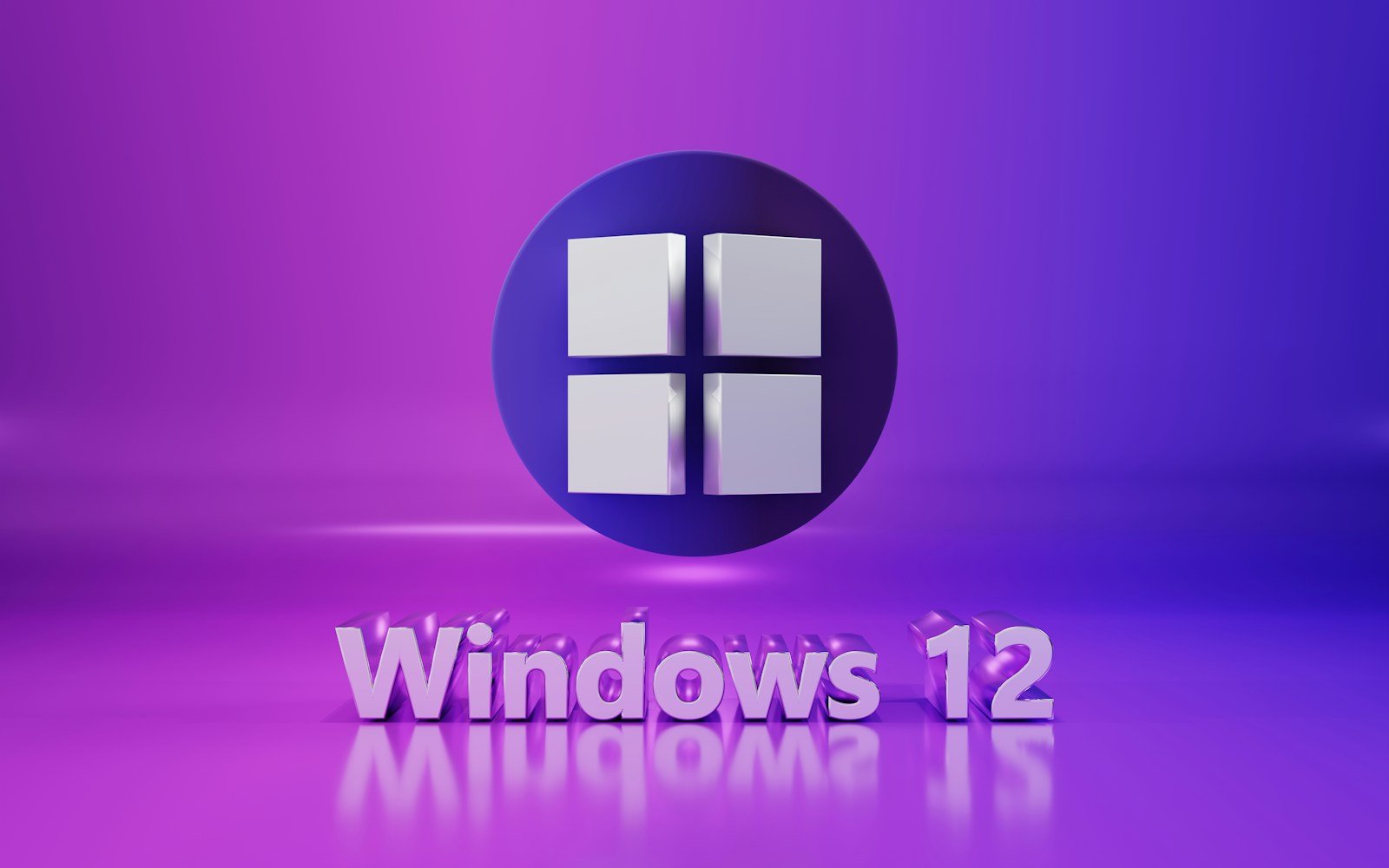Windows 12 has been a hot topic for tech enthusiasts waiting for Microsoft’s next big operating system update. Despite earlier rumors suggesting a 2024 release, recent information points to a different timeline. According to multiple sources, Windows 12 is now expected to launch in 2025 rather than this year as many had initially hoped.
This shift in the release timeline was hinted at during CES when Microsoft published a blog post referencing 2025 for the next Windows version. The new operating system, reportedly codenamed “Next Valley,” will replace Windows 11 and is expected to heavily incorporate AI features. While some had speculated about potential releases in 2024, we’re now well into March 2025 without any official announcement from Microsoft.
The delay isn’t unusual for major operating system updates, as Microsoft likely wants to ensure a polished product before release. Some reports have even suggested a possible 2027 timeline, showing just how fluid these release dates can be until officially confirmed by Microsoft.
Latest About Windows 12 Release Date: What We Know So Far
For months, rumors have circulated about Microsoft’s next-generation operating system — often referred to as Windows 12. However, as of November 2025, it’s becoming increasingly clear that the long-anticipated release isn’t happening anytime soon.
No Windows 12 in 2025 — Microsoft Confirms Focus on Windows 11
Microsoft has officially stated that there will be no Windows 12 release in 2025. Instead, the company is doubling down on its current platform, Windows 11, which continues to evolve through major feature updates. The latest version, Windows 11 25H2, rolled out earlier this year, bringing improvements in performance, AI integration, and system stability.
According to Tom’s Hardware and Windows Forum, Microsoft’s strategy centers on refining Windows 11 rather than replacing it. This approach mirrors the company’s “Windows as a Service” model — delivering continuous updates instead of launching entirely new versions every few years.
Next-Gen Windows May Not Arrive Until Late 2026 or Beyond
While early industry speculation pointed to a Windows 12 launch in late 2025, recent reports suggest that timeline has shifted. Insiders now believe that the next-generation Windows — possibly branded as Windows 12 — may not appear until late 2026 or even later, if it arrives at all.
This delay aligns with Microsoft’s current focus on integrating AI-driven features like Copilot, improving security, and optimizing cloud connectivity within Windows 11. The company appears to be prioritizing incremental innovation over a full operating system overhaul.
Why Microsoft Is Taking Its Time
Several factors contribute to the slower pace toward a new OS release:
- AI Integration: Microsoft is embedding AI deeply into Windows 11, making it a central part of the user experience.
- Hardware Compatibility: The company wants to ensure that future versions align with next-generation hardware, especially AI PCs.
- User Stability: Frequent major OS changes can disrupt enterprise and personal workflows, so Microsoft is opting for smoother, modular updates.
The Bottom Line
Despite the buzz, Windows 12 is not coming in 2025. Microsoft’s current roadmap points toward continued investment in Windows 11, with the next major evolution of Windows possibly arriving in late 2026 or beyond — if it happens at all.
For now, users can expect Windows 11 to remain Microsoft’s flagship operating system, receiving regular updates and new features that gradually shape the future of Windows computing.
Sources:
- Tom’s Hardware – Windows 12 Release Pushed Back
- Windows Forum – Microsoft Confirms No Windows 12 in 2025
- Microsoft Q&A – Official Statement on Windows 12
Key Takeaways
- Windows 12 is now expected to launch in 2025, not 2024 as previously rumored.
- The next operating system is reportedly codenamed “Next Valley” and will feature significant AI integration.
- Microsoft has not yet made an official announcement about the exact release date for Windows 12.
Overview of Windows 12
Windows 12 is shaping up to be Microsoft’s most ambitious operating system update yet, with a strong focus on AI integration and improved security features. The new OS is expected to build upon Windows 11‘s foundation while introducing a more modular design and enhanced capabilities.
Evolution from Windows 10 and Windows 11
Windows 12 represents the next step in Microsoft’s operating system journey. Following Windows 10‘s long-term service model and Windows 11’s visual overhaul, Windows 12 aims to further refine the user experience. The new OS, reportedly codenamed “Next Valley,” will likely maintain Windows 11’s centered taskbar and rounded corners aesthetic but with significant under-the-hood improvements.
Microsoft has been gradually moving away from the traditional major release cycle. Windows 10 introduced the concept of “Windows as a Service” with regular updates. Windows 11 shifted back to a more traditional release model but kept frequent feature updates. Windows 12 may combine these approaches with a modular system design that allows for more flexible component updates.
The transition to Windows 12 is expected to be smoother than the jump from Windows 10 to 11, with more reasonable hardware requirements to ensure wider compatibility.
Anticipated Features of Windows 12
Windows 12 is rumored to feature a highly modular design allowing users to customize their experience more deeply. This approach may enable Microsoft to deliver features to different user segments more efficiently.
The user interface will likely receive refinements rather than a complete overhaul. Expect improved window management, enhanced touch controls, and better multi-monitor support. Early leaks suggest a more customizable Start menu and possibly a floating taskbar option for different screen sizes and orientations.
Performance improvements are a key focus, with reports indicating better resource management and faster startup times. The OS may introduce new power-saving features particularly beneficial for laptops and mobile devices.
Microsoft appears to be working on better integration between Windows devices and smartphones, potentially expanding the Phone Link app capabilities for seamless cross-device experiences.
Security Enhancements and User Privacy
Windows 12 is expected to build upon Microsoft’s Pluton security processor integration, offering hardware-level protection against sophisticated attacks. This chip-to-cloud security approach helps safeguard credentials, encryption keys, and personal data.
Privacy controls will likely be more granular, giving users clearer visibility into what data is collected and how it’s used. Microsoft may introduce simplified privacy dashboards that make it easier to manage permissions across applications.
The OS will probably include enhanced phishing protection and improved Microsoft Defender capabilities. Advanced threat detection powered by AI could identify unusual system behavior before it becomes problematic.
Security updates may become less intrusive with more background installations that don’t interrupt workflow, addressing a common complaint from Windows users.
Integration of AI Capabilities
AI integration will be the standout feature of Windows 12, extending beyond the current Copilot capabilities. Microsoft is positioning AI as central to the operating system rather than just an add-on feature.
Daily tasks may become more streamlined with AI-powered assistants that can summarize emails, schedule meetings, and suggest relevant files based on your current work. Document creation and editing could benefit from enhanced AI tools that help with writing and design.
System management will likely become more intuitive with AI analyzing usage patterns to optimize performance, battery life, and storage. The OS may proactively suggest settings changes based on your habits.
Hardware requirements for these AI features remain a question. Microsoft will need to balance powerful AI capabilities with accessibility across different device specifications. Some advanced features may require newer neural processing units (NPUs) found in the latest processors.
Technical Insights and Release Details
Microsoft’s Windows 12 is shaping up with notable technical advancements and a clearer release timeline. The upcoming operating system promises performance improvements and new hardware requirements that will influence user experiences.
System Performance and Efficiency
Windows 12 is expected to bring significant performance enhancements over Windows 11. Microsoft has reportedly focused on optimizing the operating system to better utilize modern processor architectures, particularly those with hybrid core designs like Intel’s latest chips.
The system will likely introduce improved power management algorithms that balance performance and battery life more effectively. This could be especially beneficial for laptop users who need extended battery runtime without sacrificing computing power.
AI integration appears to be a central focus, with the operating system designed to leverage neural processing units (NPUs) in newer processors. These dedicated AI cores may handle tasks like background processing, real-time translations, and context-aware features more efficiently than traditional CPU cores.
Memory management improvements are also anticipated, allowing Windows 12 to run smoothly on devices with varying RAM configurations while reducing system resource overhead.
Hardware Compatibility and Requirements
Windows 12 will likely establish stricter hardware requirements than its predecessors. Based on industry patterns, the system may require newer generation processors from Intel, AMD, and Qualcomm, with particular emphasis on the Snapdragon X Elite chips for ARM-based systems.
Anticipated minimum requirements:
- 8th generation Intel Core or newer processors
- AMD Ryzen 3000 series or newer
- Qualcomm Snapdragon X Elite or comparable ARM processors
- TPM 2.0 security chip
- 8GB RAM minimum (16GB recommended)
- 64GB storage (SSD recommended)
Microsoft may push for hardware with dedicated NPUs to support AI features. This could make some older, even Windows 11-compatible systems unable to run Windows 12 optimally.
The shift could accelerate hardware refresh cycles for businesses and create a more defined ecosystem of Windows 12-ready devices. Manufacturers are likely already developing systems specifically designed for the new operating system.
The Launch Date and Release Strategy
Windows 12 appears positioned for release between July and October 2025, according to multiple industry sources. This timeline coincides with Windows 10’s end-of-support date in October 2025, creating a natural transition point for users.
Microsoft will likely follow its established pattern of phased rollouts, beginning with Windows Insider members before expanding to general availability. Early builds may already be available in the Canary Channel for testing advanced features.
The company might introduce a preview version at a dedicated event in early 2025, showcasing key features and partnerships with hardware manufacturers. This would give developers time to update applications for compatibility.
The release strategy will probably include free upgrades for eligible Windows 11 users, though the specific qualification criteria remain unannounced. Business customers may receive deployment tools and extended support options to ease the transition across enterprise environments.
Frequently Asked Questions
Windows 12 remains a topic of significant interest with many questions about its release, features, and compatibility. Users are particularly concerned about system requirements and upgrade options.
What are the system requirements for installing Windows 12?
While Microsoft hasn’t officially announced Windows 12 system requirements, experts predict they’ll be higher than Windows 11. Based on current trends, devices will likely need at least 8GB RAM and TPM 2.0 security.
The processor requirements may include newer generation CPUs, possibly 8th generation Intel or AMD Ryzen 3000 series and newer. Storage requirements will likely maintain or increase the 64GB minimum from Windows 11.
When is the official launch date for Windows 12 slated?
According to search results, Windows 12 is expected to release in the latter half of 2025. Some earlier reports suggested a fall 2024 release date, but more recent information points to 2025.
The timing aligns with Windows 10 reaching end of support, creating a natural transition point. Microsoft typically announces major Windows releases several months before launch.
What pricing models can be expected for the new Windows 12?
Microsoft has not revealed pricing for Windows 12. The company may follow previous patterns with different editions at various price points.
Home editions typically cost less than Professional versions. Microsoft might also offer subscription-based options, expanding on their Microsoft 365 model that combines services and software.
Will there be an option to upgrade to Windows 12 from previous versions without additional cost?
Microsoft offered free upgrades to Windows 10 and initially to Windows 11 for eligible devices. A similar approach may be taken with Windows 12.
Free upgrades would likely be time-limited and require devices meet all system requirements. Windows 11 users may have higher chances of qualifying for free upgrades than those on older systems.
How does Windows 12 compare feature-wise with Windows 11?
Windows 12 is expected to emphasize AI integration more heavily than Windows 11. The user interface may receive a substantial refresh with more customization options.
Security enhancements will likely be prominent, building on Windows 11’s foundation. Cloud connectivity and cross-device experiences may see significant improvements, aligning with Microsoft’s vision for modern computing.
Are there hardware compatibility considerations for Windows 12 on older computers?
Older computers will likely face compatibility challenges with Windows 12. The TPM 2.0 requirement that limited Windows 11 adoption will probably remain or become stricter.
CPU generation requirements may advance, potentially excluding more aging hardware. Graphics capabilities might need to support newer DirectX versions for full functionality.







